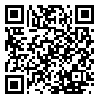BibTeX | RIS | EndNote | Medlars | ProCite | Reference Manager | RefWorks
Send citation to:
URL: http://journal.rums.ac.ir/article-1-487-en.html
Effects of Constant Static Magnetic Fields Exposure on Testosterone, FSH and LH Secretion in Male Rat
A. Ahangarpour [1] , H. Fathi Moghaddam [2] , M.J. Tahmasebi Biragani [3] , H. Shahbazian [4] , M. Badvi [5]
Received: 05/12/07 Sent for Revision: 23/04/08 Received Revised Manuscript: 31/05/08 Accepted: 05/07/08
Background and Objectives: Several investigators have reported that exposure to electric and magnetic fields is a risk factor for human health. In addition EMFs have negative effects on reproduction and development, and are harmful to people who are working with or living around them. The aim of this experimental study was to evaluate the effect of static magnetic fields on the male rat reproduction hormones.
Material and Methods: This experimental study was performed on 144 male Wistar rats. Animals were divided into three protocols. Each protocol included four groups (with the same range of age and weight) and each group contained 12 rats. After one-week adaptation, rats were randomly exposed to SMF as follow: (0, 6, 12 and 24 mT), 40 min daily for 34 days (group 1), 2 hours for 17 days (group 2) and 2 hours for 34 days (group 3). All protocols were started from 9:00 a.m. After experiments, animals were anaesthetized and blood samples were collected in separate tubes. Their serum was isolated and kept at -20°C for fatuere use. Testosterone, FSH and LH hormones were measured by RIA methods using gamma counter equipment. The data were analyzed using one-way ANOVA followed by post hoc Tukey's test.
Results: Our results for the protocol of experiments (40 min/day for 34 days) indicated that SMF has increased serum testosterone significantly compared to the other groups (6mT) (p<0.01). In contrast, in the second protocol SMFs (2 h/day for 17 days) decreased both serum testosterone and FSH levels (p<0.05). For the third protocol, SMFs (2 h/day for 34 days) decreased serum testosterone 12mT vs 6 mT (p<0.05). LH did not change significantly in presence of static MFs.
Conclusions: Our results suggest that SMFs probably cause gonadal axis dysfunction at the hypothalamic-pituitary level in male rats. In higher SMFs intensities, we have seen dysfunction in target organ or nervous system levels.
Key words: Magnetic field, Follicular stimulating hormone, Lutenizing hormone, Testosterone
Funding: This research was funded by Jundishapour Ahvaz University of Medical Sciences. Number 389.
Conflict of interest: None declared.
Ethical approval: The Ethics Committee of Jundishapour Ahvaz University of Medical Sciences approved the study.[1] - Assistant Prof., Dept. of Physiology, Medical School, Physiology Research Center and Diabetic Reaserch Center, Joundishapour University of Medical Sciences, Ahvaz , Iran
(Corresponding Author) Tel:(0611)3367543, Fax: (0611)3330074, E- mail: ahang1002002@yahoo.com
[2] - Associate Prof., Dept. of Physiology, Medical School, Physiology Research Center, Joundishapour University of Medical Sciences, Ahvaz , Iran
[3] - Associate Prof., Dept. of Biophysic, Medical School, Joundishapour University of Medical Sciences, Ahvaz , Iran
[4] - Associate Prof., Dept. of Internal Medicine, Medical School, Diabetic Reaserch Center, Joundishapour University of Medical Sciences, Ahvaz , Iran
[5] - Associate Prof., Dept. of Physiology, Medical School, Physiology Research Center, Joundishapour University of Medical Sciences, Ahvaz , Iran
| Rights and permissions | |
 |
This work is licensed under a Creative Commons Attribution-NonCommercial 4.0 International License. |






